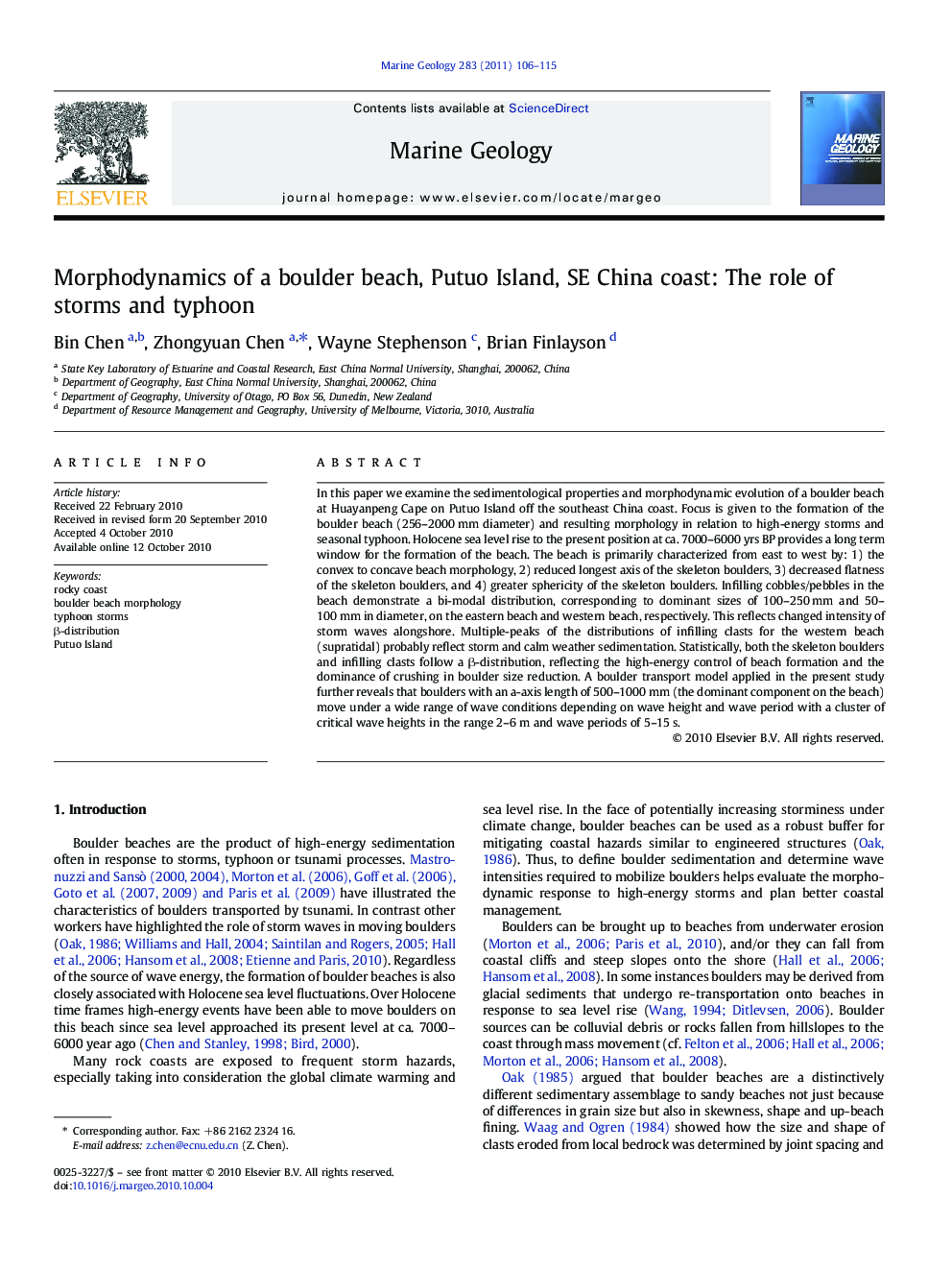| Article ID | Journal | Published Year | Pages | File Type |
|---|---|---|---|---|
| 4718731 | Marine Geology | 2011 | 10 Pages |
In this paper we examine the sedimentological properties and morphodynamic evolution of a boulder beach at Huayanpeng Cape on Putuo Island off the southeast China coast. Focus is given to the formation of the boulder beach (256–2000 mm diameter) and resulting morphology in relation to high-energy storms and seasonal typhoon. Holocene sea level rise to the present position at ca. 7000–6000 yrs BP provides a long term window for the formation of the beach. The beach is primarily characterized from east to west by: 1) the convex to concave beach morphology, 2) reduced longest axis of the skeleton boulders, 3) decreased flatness of the skeleton boulders, and 4) greater sphericity of the skeleton boulders. Infilling cobbles/pebbles in the beach demonstrate a bi-modal distribution, corresponding to dominant sizes of 100–250 mm and 50–100 mm in diameter, on the eastern beach and western beach, respectively. This reflects changed intensity of storm waves alongshore. Multiple-peaks of the distributions of infilling clasts for the western beach (supratidal) probably reflect storm and calm weather sedimentation. Statistically, both the skeleton boulders and infilling clasts follow a β-distribution, reflecting the high-energy control of beach formation and the dominance of crushing in boulder size reduction. A boulder transport model applied in the present study further reveals that boulders with an a-axis length of 500–1000 mm (the dominant component on the beach) move under a wide range of wave conditions depending on wave height and wave period with a cluster of critical wave heights in the range 2–6 m and wave periods of 5–15 s.
